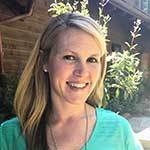After 10 years of teaching, I have streamlined my approach to identifying effective personalization practices. Recently, while working on a project to design teacher prep for blended and personalized learning, I had the unique opportunity to visit numerous blended classrooms and schools around the nation. I witnessed a wide spectrum of approaches and uncovered some common denominators of practice that were allowing teachers and schools to successfully personalize learning by integrating (or blending) technology with in-person instruction. When entering a personalized, blended, or student-centered school or classroom, the first thing I ask my host is: “What is the problem of practice or instructional challenge that you are leveraging technology to address?“
Technology should be not be an “add on;” it should be used to address instructional challenges and allow for deeper personalization and student choice. Taking the time upfront to answer this fundamental question is key to success with technology in the classroom because it guarantees that the model and innovative actions are grounded in practice and student outcomes.
Why Personalize? To Reach All Students
When asked this key question, one teacher I met—Tanesha—responded that though she was hitting test-score goals and had a “well-run” classroom, she realized she was also “teaching to the middle.” Her response struck me, because it was the same challenge I had faced before I shifted my instruction to blended learning. Like Tanesha, for most of my teaching career, I taught to the middle during class, and used time after class to tutor struggling students and challenge accelerated learners.
Tanesha wanted to assess students more frequently, have more time to check in with each student, identify and fill gaps during class time, and give students more learning options. This gut check about the gap between what she wanted for her students and what she was actually delivering led her to adopt a blended model of instruction.
Implementing Blended Learning Practices
Tanesha implemented three learning stations in her classroom: individual work (with digital playlists), collaborative work (project-based learning), and direct instruction (led by the teacher). By introducing technology and multiple learning environments, she was able to differentiate, scaffold, and personalize learning for students as they rotated among standards-based stations. Offering options for how students worked toward and demonstrated mastery allowed them to dig deeper into the content based on their interests and uncover access points that weren’t possible without technology.
For instance, at their independent work stations, students engaged with the curriculum through videos, PowerPoint presentations, readings, audio files, and even interactive programs on their learning playlists. If they hit a roadblock, students could clarify misconceptions during direct instruction time, where Tanesha could give direct instruction to groups of 10 as opposed to the entire class. For the first time in her teaching career, she knew exactly which students had mastered a topic, which students needed gaps filled, and which students needed extra practice before a formal assessment.
After implementing these classroom stations, grades improved. Tanesha further strengthened her class culture and students benefitted from their newfound sense of ownership over how they learned.
Key Takeaways
What can we learn from Tanesha’s experience? Here are some elements of her success, with links to concrete strategies that you can use to start shifting your practice today.
- She aligned her approach with her instructional challenge of “teaching to the middle” by creating a more robust differentiated learning environment.
- She built a model that supported her and her students’ need to access content in new ways.
- She used technology to address her instructional challenges and give her students choice and ownership of their learning.
Personalized Learning in Action
There are many schools and teachers who have moved away from “teaching to the middle” to a more personalized approach that gives students the opportunity to make choices and build agency. Check out The Learning Accelerator’s profiles of three schools that have successfully made the shift.
- Roots Elementary: This K–2 charter school in Denver uses technology along with innovative staffing, curriculum, and physical structures to provide student-centered learning experiences.
- Lindsay High School: This 9–12 grade public school in California uses a performance-based approach to personalize learning.
- LPS Richmond: In this high school math course, students work through a personalized academic numeracy program called Navigate Math.
The powerful promise of personalized learning is that we can now engage each learner in ways that capitalize on their unique strengths and address their individual needs. But in order to realize this promise, we must be sure to anchor personalization to real problems of practice or specific instructional challenges we face on a day-to-day basis.

